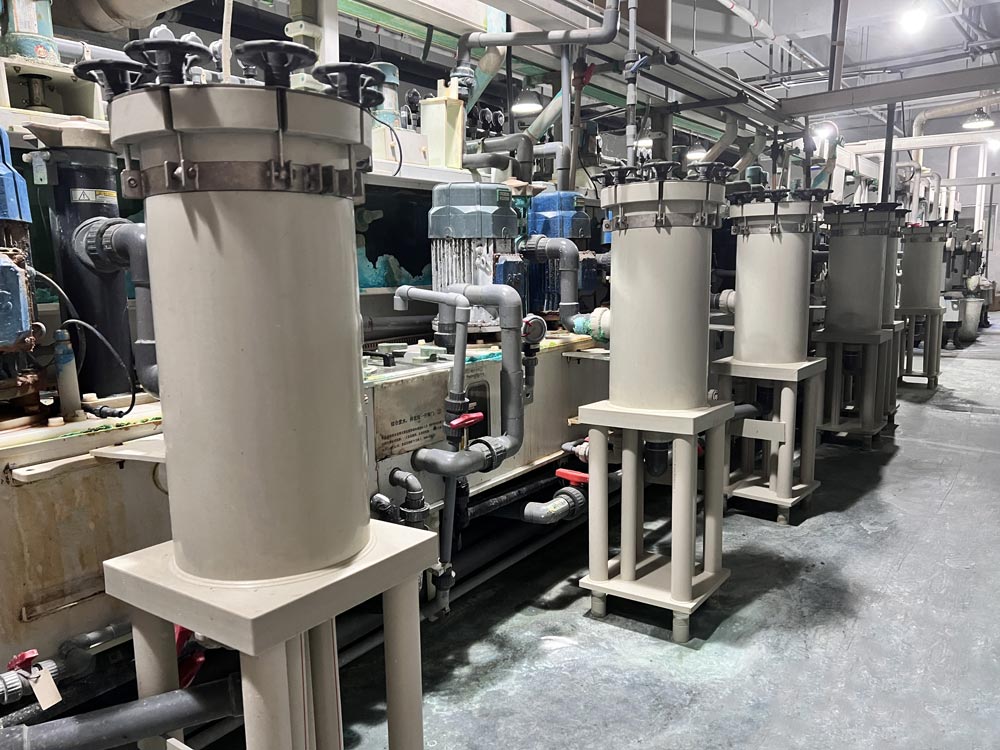# Electroplating Filter: Enhancing Efficiency and Quality in Metal Finishing Processes
Electroplating is a critical process in the metal finishing industry, used to apply a thin layer of metal onto a substrate to enhance its properties, such as corrosion resistance, wear resistance, and aesthetic appeal. However, the efficiency and quality of electroplating heavily depend on the purity of the plating solution. This is where electroplating filters come into play, ensuring that the solution remains free from contaminants that could compromise the final product.
## The Role of Electroplating Filters
Electroplating filters are designed to remove impurities from the plating solution, such as particulate matter, oils, and other contaminants. These impurities can originate from various sources, including the substrate, the plating bath, and the surrounding environment. If not removed, they can lead to defects in the plated layer, such as pits, nodules, and uneven coatings.
By maintaining a clean plating solution, electroplating filters help achieve a uniform and high-quality metal deposit. This not only enhances the appearance of the finished product but also improves its functional properties, such as adhesion and durability.
## Types of Electroplating Filters
There are several types of electroplating filters available, each suited to different applications and levels of filtration:
– **Cartridge Filters**: These are disposable filters that use a pleated media to capture contaminants. They are easy to replace and are commonly used in low to medium flow rate applications.
– **Bag Filters**: These filters use a fabric bag to trap larger particles. They are cost-effective and suitable for high flow rate applications.
– **Depth Filters**: These filters use a thick media to capture particles throughout the depth of the filter. They are effective for removing fine particles and are often used in high-precision applications.
– **Membrane Filters**: These filters use a thin, porous membrane to remove very fine particles and microorganisms. They are used in applications requiring the highest level of filtration.
## Benefits of Using Electroplating Filters
The use of electroplating filters offers several benefits, including:
– **Improved Plating Quality**: By removing contaminants, filters ensure a smooth and even metal deposit, reducing the likelihood of defects.
– **Extended Bath Life**: Clean plating solutions last longer, reducing the frequency of bath replacement and associated costs.
– **Enhanced Process Efficiency**: Filters help maintain consistent plating conditions, leading to faster and more reliable production cycles.
– **Reduced Waste**: By keeping the plating solution clean, filters minimize the generation of waste and the need for costly disposal.
## Maintenance and Best Practices
To maximize the effectiveness of electroplating filters, regular maintenance is essential. This includes:
– **Regular Inspection**: Check filters for signs of clogging or damage and replace them as needed.
– **Proper Installation**: Ensure filters are correctly installed to prevent bypass and ensure optimal filtration.
– **Monitoring**: Regularly monitor the quality of the plating solution and adjust filtration parameters as necessary.
By following these best practices, manufacturers can ensure that their electroplating processes remain efficient and produce high-quality results.
## Conclusion
Electroplating filters are indispensable tools in the metal finishing industry, playing a crucial role in maintaining the purity of plating solutions and ensuring the quality of the final product. By choosing the right type of filter and adhering to proper maintenance practices, manufacturers can enhance the efficiency and reliability of their electroplating processes, ultimately leading to better outcomes and greater customer satisfaction.
Keyword: electroplating filter
